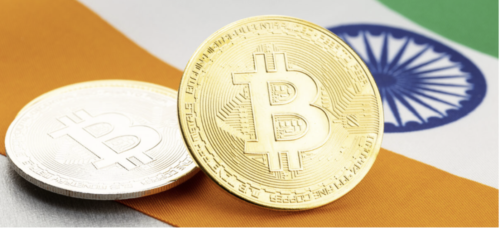Many emerging countries have suffered asymmetric depreciation relative to stronger western currencies.
It’s a tough act for these guys and in some cases, they have been penalized by the larger nations for external risks out of their control.
India is said to be the new China and that’s not something to downplay.
They boast a young and highly educated demographic that is hellbent on improving their standard of life.
However, lately, the lust for crypto in India has been met with an iron fist by the Indian government which presented an exorbitant tax move as an opportunity to “professionalize” the asset class.
It also made crypto trading prohibitively expensive.
The decision comes amid an onslaught of criticism of the industry by government officials and regulators.
Some of the most brutal attacks have come from India’s central bank as it prepares to launch a national digital currency.
In short, since April 1, any gains on the transfer of crypto assets are taxed at 30%, a higher rate than many other jurisdictions including the US and the UK.
Trading losses can’t be offset against income as well.
Trading on three exchanges ZebPay, WazirX, and CoinDCX crashed between 60% and 87% after the tax took effect.
Under the banner of protecting against terrorist financing, fraud, and other illicit activities, the Indian government has tried to reign in the crypto industry and put it under its control.
Some of this is about avoiding conservative Indians that might throw their savings down the drain into a highly volatile and uncertain asset.
Central Banks tend to be risk-averse and most bank members have never had a real job in their life and come from academia.
There is still a stigma that crypto is high risk and might crash.
Indians have now been forced to migrate to foreign trading platforms or physically immigrate abroad to countries more favorable to crypto operations.
A huge revenue gap will take effect moving forward as in the past, investments in crypto in India grew from about $923 million in April 2020 to nearly $6.6 billion in May 2021.
The country’s population of 1.4 billion people trends young, with a growing, well-educated middle class.
After Vietnam, India achieved the second highest rate of crypto adoption.
While China has banned crypto transactions entirely because of many of the same reasons, India is yet to introduce a bill defining digital assets and decide how to regulate them.
Indian Finance Minister Nirmala Sitharaman has said any legislation can be effective only with international cooperation to prevent so-called regulatory arbitrage, whereby companies shop for the most lenient jurisdiction to do business.
The uncertainty is sending a chill through the clusters of Indian startups developing products based on blockchains, from decentralized finance applications to nonfungible tokens.
Reading the tea leaves, crypto’s assent clashes with India’s central bank and the central bank rather introduce a central bank digital currency than allow crypto to operate like a wild western.
It’s not surprising that those poorer countries lust for financialized centralization and crypto is the scapegoat.
Scarily, other countries like China have been developing these central bank digital currencies for years like the digital yuan and there is a low risk they could wipe out the existing crypto out there.
This is why many banana republics can never innovate, develop, or thrive. They simply won’t open up enough let alone open up to foreigners. Money and technology are both met with suspicion.
I would go even so far as to say that the future of crypto will either exist in the United States or not at all.
When bureaucrats are only willing to frame any financial conversation by the amount of control they can secure, then developing an alternative financial system like crypto is a non-starter.
America is the best country to nurture emerging technology because leaders understand its power and trajectory of it and even better, do not turn a blind eye to its potency.
This is what happened with inventions like the internet, personal computer, and the smartphone.
It will most likely happen with crypto as well.



